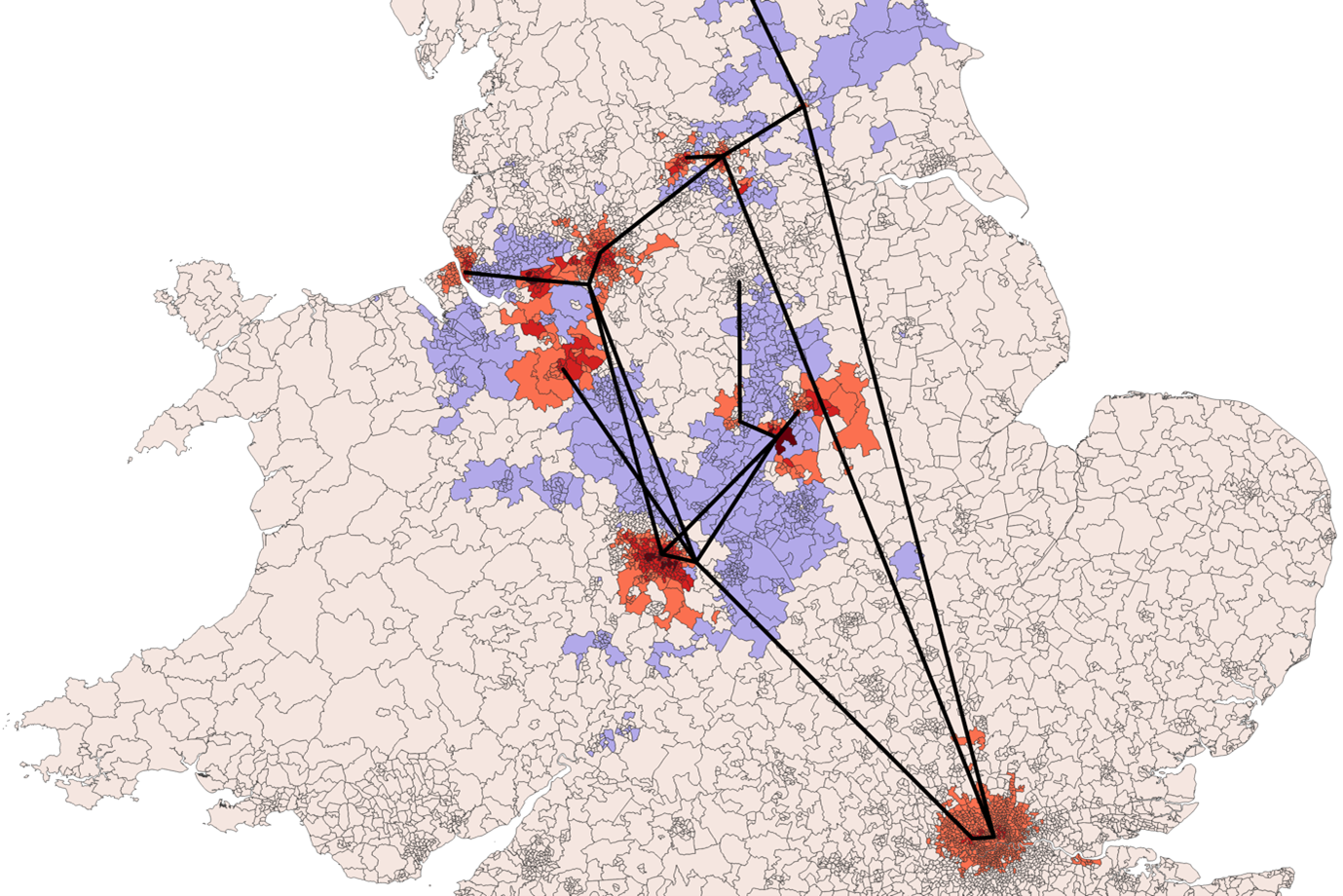

Real-time modelling with census and timetable data from multiple sources is a quick and easy way to test resilience in a wide range of scenarios, explains Richard Milton, senior research fellow at University College London
Join other savvy professionals just like you at CIHT. We are committed to fulfilling your professional development needs throughout your career
By Richard Milton, in conversation with Craig Thomas
With resilience getting more attention, and with the help of funding from UK Research and Innovation (UKRI), we’ve developed QUANT, a travel-to-work model, using data from the 2011 census and all the timetables for transport services in the UK, indicating all the trends. We also have all the road data too: we know all the road segments, their lengths and speed limits, so we know journey times.
All that data gives us a huge network graph of the UK for different modes of transport, a model that has 8,436 zones.
We model journeys from every zone to every other zone and work out how long it would take on road, by rail or bus, which is our cost function. We know the flows of people from the census, we know how many people live in a zone and we know the flows from that zone to every other zone.
We also know how long people take to travel from the home zone to the work zone, which enables us to build a mathematical model that fits the census data. From that model, we can run scenarios.
The QUANT model was originally created by Prof. Michael Batty at the UCL Bartlett Centre for Advanced Spatial Analysis. [Firstly] funded by the Future Cities Catapult and then the Alan Turing Institute for Artificial Intelligence, the new funding we’ve received from DAFNI (Data Analytics Facility for National Infrastructure) is now allowing us to put the model on to DAFNI and join it up with other models.
The ability to link up models is powerful, as is the ability to run lots of models: for example, our models of the 8,436 zones gives you 71 million possible combinations of connecting any zone to any other zone.
If you’re planning a fast rail link between two zones, we can use the model to discover if it’s worth doing. It’s not definitive, of course, but it might suggest that it warrants further investigation.
Our modelling enables us to experiment with real data, at scale, using simple algorithms. What the QUANT model does is show that things that are closer are more important and things that are bigger are more important, using a scientific framework.
We've run events with a touch table where people can build a High Speed 2 (HS2), run the model and about 30 seconds later they have an answer. It's like real-time, urban modelling: it’s fast, lightweight, and interactive, so people can play with the models and just see what happens.
Another example is connecting two zones together with a faster link and see how many other network links also get faster.
If a journey from zone one to a third zone happens to go through a second zone, by making zones one to two faster, you've also made zones one to three faster. The primary change is the physical infrastructure in zones one and two, but there are also secondary changes created by the link that you've just made faster.
You can end up with massive numbers of secondary changes for few primary changes, which you can use in your resilience calculations: speeding up one link could have 50,000 consequences.
The QUANT model is ideal for these searches of model space. Previously, it could take two-and-a-half hours to run a model, which is obviously a problem when you want to run 100,000 scenarios: if you're taking 40 seconds, which is what we're currently doing, it’s possible to run multiple models much quicker.
CIHT recently released a report on the role of data and AI in helping transport decarbonisation. Read the Executive Summary, or download the white paper.
Main image: Example of population movement prediction as a result of HS2; credit: QUANT

Image: Example of population movement prediction as a result of HS2; credit: QUANT
Join other savvy professionals just like you at CIHT. We are committed to fulfilling your professional development needs throughout your career
{{item.AuthorName}} {{item.AuthorName}} says on {{item.DateFormattedString}}: